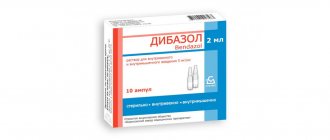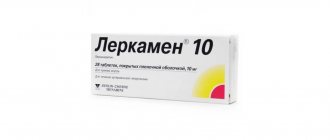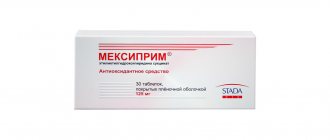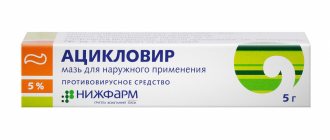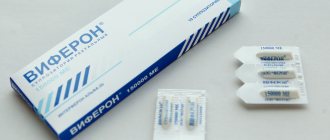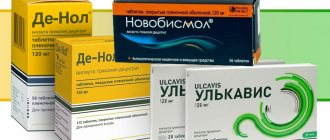Herbal laxatives are considered one of the best because they have virtually no side effects. One of these medications is Senadexin tablets. Accepted by adults and children from 12 months. You can purchase them at a very affordable price in our online store.
Pharmacodynamics and pharmacokinetics
Pharmacodynamics
A herbal laxative that affects the peristalsis of the large intestine.
The action is caused by anthraglycosides and other glycosides , which, when taken orally, transit through the stomach and small intestine without being absorbed. In the colon, anthraglycosides are broken down by intestinal microflora into active derivatives Anthrone and anthranols , which irritate the interoreceptors of the large intestine, stimulating peristalsis and accelerating the evacuation of intestinal contents. The drug prevents the absorption of water and electrolytes. Due to the osmotic effect, there is an increase in the amount of stool and filling pressure, which helps stimulate peristalsis.
A reliable effect appears after 6-11 hours. With prolonged use of the drug, the intensity of its therapeutic effect may be weakened due to a decrease in potassium in the blood.
Pharmacokinetics
Metabolites of anthraglycosides contained in senna are almost not absorbed and are excreted mainly in feces, and to a lesser extent in urine. They are also excreted in sweat, and small amounts may pass into breast milk.
Instructions for use "Senadexin"
The drug is taken once a day before bedtime. Dosage depends on age:
- Adults and children over 11 years of age take 1-2 tablets at a time. If there is no effect or it is weak, you can take 3 tablets at once, but only a few days after the start of therapy.
- Children (12 months - 6 years) are advised to take a third of the tablet once a day at night.
- Children (6 to 11 years old inclusive) take half the adult dosage also once a day before bedtime.
Contraindications
- Vomiting, nausea, acute inflammatory lesions of the digestive tract ( colitis , Crohn's disease ).
- Allergy to the components of the drug.
- Intestinal obstruction , strangulated hernia , spastic constipation , uterine and gastrointestinal bleeding, cystitis .
- Undiagnosed diseases of the digestive tract arising from acute intestinal disorders or surgical interventions ( peritonitis , appendicitis , diverticulitis , diarrhea ).
- Epigastric pain of unknown origin, pronounced changes in water-salt balance, organic liver disorders, spastic pain, rectal hemorrhages.
Side effects
Side effects are reversible and quickly disappear after discontinuing Senadexin or reducing its dose.
- Digestive reactions: anorexia , abdominal pain, nausea, diarrhea, colic, vomiting, intestinal pseudomelanosis, flatulence , digestive disorders, intestinal atony, weight loss.
- Reactions from the genitourinary tract: proteinuria , change in urine color, hematuria .
- Metabolic reactions: loss of electrolytes, which can cause cardiac disorders, convulsions , muscle weakness, fatigue, collapse .
- Immune reactions: itching, skin rash, urticaria , generalized or local exanthema .
Senadexin 70 mg No. 10 tablet.
APPROVED by the Order of the Chairman of the Committee for Control of Medical and Pharmaceutical Activities of the Ministry of Health of the Republic of Kazakhstan dated “_____”____________201__. No.___________ Instructions for medical use of the drug Senadexin Trade name Senadexin International nonproprietary name No Dosage form Tablets 70 mg Composition One tablet contains the active substance - dry senna leaf extract, based on 20% content of calcium sennosides A and B (the sum of calcium sennosides A and B ) 70 mg, excipients: lactose monohydrate, corn starch, vanillin, magnesium stearate, methyl parahydroxybenzoate, stearic acid, talc. Description Tablets of regular round cylindrical shape, with a flat surface, from light brown to dark brown color with inclusions, with the smell of vanillin, with beveled edges, with a score on one side. Pharmacotherapeutic group Laxatives. Contact laxatives. Senna glycosides. ATC code A06A B06 Pharmacological properties Pharmacokinetics The active ingredients of the drug (metabolites of senna anthraglycosides) are practically not absorbed, they are mainly excreted in feces and urine. They are also excreted in sweat and pass into breast milk. Pharmacodynamics Laxative preparation of plant origin (senna leaf or Alexandria leaf, or cassia aculifolia leaf) with a mild effect. The pharmacological action is due to anthraglycosides (mainly sennosides A and B), as well as other glycosides. When taken orally, senna glycosides pass through the stomach and small intestine unchanged, without being absorbed. In the large intestine, anthraglycosides are broken down by intestinal bacteria into pharmacologically active anthrones and anthranols, which irritate the interoreceptors of the colon, prevent the absorption of water and electrolytes, promote the diffusion of water into the intestinal lumen, resulting in loosening of feces and an increase in their volume, which helps to enhance peristalsis and accelerate bowel movements. The laxative effect appears after 6–10 hours. With prolonged use of the drug, the intensity of its action may decrease due to a decrease in potassium content in the body. The drug is well tolerated by patients; due to the low content of resinous substances, it does not irritate the intestines. Indications for use - chronic constipation - hypo- and intestinal atony - relief of bowel movements in case of hemorrhoids, proctitis and anal fissures - bowel cleansing before diagnostic and therapeutic procedures Method of administration and dosage Take orally, once a day, with liquid. Adults and children over 12 years of age are prescribed at bedtime, children under 12 years of age - in the morning on an empty stomach. Adults and children over 12 years of age are prescribed 1–2 tablets; if there is no effect, the dose is increased to 2 - 3 tablets per dose. The maximum daily dose is 3 tablets. Children aged 6 to 12 years are prescribed 1 tablet. The maximum daily dose is 2 tablets. The smallest dose needed to obtain soft stool should be taken. When selecting a dose, the same dose should be used for several days; if there is no effect, the dose should be gradually increased by ½ tablet. If, after using the maximum dose, bowel movements do not occur within three days, you should consult a doctor. When using a course, after two weeks of using the drug, you should take a break of two weeks. Should not be taken for a long time or in doses higher than recommended. Doses and duration of treatment are determined individually. Side effects Rarely - anorexia, abdominal pain, diarrhea - change in urine color - allergic reactions Possible (with long-term use) - loss of electrolytes, mainly potassium ions - albuminuria, hematuria - intestinal pseudomelanosis - colon atony, flatulence, digestive disorders. Contraindications - increased individual sensitivity to senna glycosides and other components of the drug - metrorrhagia - intestinal obstruction - acute inflammatory bowel diseases (Crohn's disease, ulcerative colitis, appendicitis) - peritonitis - peptic ulcer of the stomach and duodenum - gastrointestinal bleeding - strangulated hernia - cystitis - abdominal pain of unknown origin - severe disturbances of water and electrolyte balance - children under 6 years of age - hereditary fructose intolerance, Lapp-lactase enzyme deficiency, glucose-galactose malabsorption Drug interactions With long-term use or use in high doses, the drug enhances the effect of cardiac glycosides and antiarrhythmic drugs due to a decrease in the content of potassium ions in the body, disrupts the absorption of tetracyclines. When used simultaneously with thiazide diuretics, adrenal hormones, and licorice root preparations, the risk of developing hypokalemia increases. Reduces the effectiveness of drugs that are slowly absorbed in the gastrointestinal tract. Special instructions The drug is recommended to be used only if normalization of stool cannot be achieved by changing the diet or using drugs that increase the volume of intestinal contents. The drug should be used with caution in patients with liver and/or kidney diseases. During treatment, the color of the urine may change to a yellowish-brown or reddish color depending on the pH of the urine. Use in pediatrics In children over 6 years of age, the drug is prescribed with caution, on the recommendation of a doctor. Pregnancy and lactation The use of the drug in pregnant women is associated with a higher likelihood of developing side effects (abdominal pain, diarrhea). It is recommended to stop breastfeeding during treatment with the drug, since the components of the drug can pass into breast milk and cause frequent loose stools in the baby. Effect on the ability to drive a vehicle and potentially dangerous mechanisms The drug usually does not affect the ability to drive a vehicle or perform work that requires increased attention, speed of mental and motor reactions. However, it is necessary to take into account the individual reaction to the drug. Overdose Symptoms: diarrhea, leading to disturbances in water and electrolyte balance. Treatment: symptomatic therapy. Release form and packaging 10 tablets each in a blister pack made of polyvinyl chloride film and rolled packaging material based on aluminum foil. Outline blister packs, together with instructions for medical use in the state and Russian languages, are placed in cardboard boxes. Storage conditions Store in a dry place, protected from light, at a temperature not exceeding 25°C. Keep out of the reach of children! Shelf life 3 years Do not use after expiration date. Conditions for dispensing from pharmacies Without a prescription. Ukraine, 37500, Poltava region, Lubny, st. Petrovsky, 16. Name and country of the owner of the registration certificate OJSC Lubnyfarm, Ukraine. Address of the organization that accepts claims from consumers on the quality of products (products) on the territory of the Republic of Kazakhstan Pharm-Euro LLP 050039, Almaty, Mailina St., 72, apt. 34 Fax E-mail
Interaction
It is possible to decrease the content of active substances in the blood while taking quinidine sulfate .
Concomitant use with cardiac glycosides may provoke cardiac arrhythmia due to hypokalemia .
When taken simultaneously with antiarrhythmic drugs, corticosteroids and diuretics , the appearance of muscle weakness is possible.
With prolonged use or use in large doses, Senadexin tablets interfere with the absorption of tetracyclines .
Senadexin tablets reduce the effectiveness of slowly absorbed drugs.
"Senadexin": description, composition
The medicine is produced in the form of tablets, the main substance of which is calcium sennosides. The following auxiliary components are used: magnesium in the form of stearate, corn starch, stearic acid, cellulose, vanillin to improve the smell and others.
The product belongs to the group of laxatives. The tablets can be stored under normal room conditions at temperatures up to 30 degrees. The place should be dry, without direct sunlight. Must be protected from children. The validity period is 3 years from the date of production, subject to the described conditions.
special instructions
The drug should be used only in cases where normalization of gastrointestinal emptying cannot be achieved through diet. It is recommended to take the smallest effective dosage necessary to restore the physiological functioning of the intestines.
Persons using antiarrhythmic drugs, cardiac glycosides , drugs that increase the QT interval on the ECG, corticosteroids, diuretics or drugs containing licorice root extract should consult with their doctor before starting Senadexin.
Before starting to take laxative medications , you need your doctor to find out the cause of constipation (if the cause is unknown or nausea, abdominal pain and vomiting are present), since these symptoms are characteristic of intestinal obstruction .
The drug is for occasional use, so if its use lasts more than 7 days, you should consult a doctor, since long-term use of laxatives that stimulate bowel function can lead to worsening intestinal atony.
Senadexin should not be used within 2 hours after taking other medications or in dosages exceeding those recommended.
It is recommended to use the drug with caution in persons with liver and kidney diseases, as well as with chronic inflammatory bowel diseases.
Contraindications for use
In some cases, taking the drug should be avoided:
- intolerance to any component;
- metrorrhagia;
- obstruction;
- acute intestinal inflammation;
- ulcerative type colitis;
- Crohn's pathology;
- ulcerative formations in the stomach, intestines;
- bleeding in the gastrointestinal tract;
- appendicitis;
- strangulated hernia;
- peritonitis;
- cystitis;
- pain in the abdomen, the origin of which is unknown;
- severe metabolic disorders;
- children under 12 months.
Tablets should be used with caution in children under 5 years of age inclusive, as well as in patients with liver and kidney diseases.
Analogs
Level 4 ATX code matches:
Slabicap
Kafiol
Guttasil
Laxigal
Senna leaves
Herbion Laksana
Castor oil
Dulcolax
Bisacodyl
Regulax Picosulfate
Regulax
Weak
Mukofalk
Senade
Guttalax
Xena, Senade, Senadex, Fibralax, Licorice Syrup, Slabilen, Suppositories with Glycerin, RectActive, Norgalax, Lactulose, Laxatin, Duphalac, Guttalax, Bisacodyl.
Senadexin for weight loss
Although taking the drug for the purpose of weight loss is not an indication for its use, the use of Senadexin is still quite common in such cases. Patients whose experience in such experiments was successful often post notes entitled “instructions for Senadexin for weight loss.” It is worth recalling that systematic use of the drug for the purpose of losing weight can cause serious side effects and affect the condition of the skin and the balance of intestinal microflora. Reviews claim that Senadexin promotes weight loss, but its effect is short-lived.
Drug interactions
The drug can be combined with various medications. But with long-term use, it can enhance the therapeutic effect of cardiac glycosides and drugs against arrhythmia. The reason is associated with a decrease in calcium concentration in the bloodstream.
If you combine the intake with thiazide diuretics and adrenal hormones, as well as with drugs based on licorice root, hypokalemia may develop. It should also be noted that Senadexin reduces the therapeutic effect of medications that have a low absorption rate in the gastrointestinal tract.
Senadexin price, where to buy
The price of Senadexin No. 20 in Russia averages 23-26 rubles.
In Ukraine, the drug in such packaging costs 6-8 hryvnia.
- Online pharmacies in RussiaRussia
- Online pharmacies in UkraineUkraine
- Online pharmacies in KazakhstanKazakhstan
ZdravCity
- Senadexin tablets 70 mg 20 pcs. LLC FC Zdorovye
24 rub. order - Senadexin tablets 20 pcs JSC Vifitech PKP LLP
19 rub. order
Pharmacy Dialogue
- Senadexin (tab. No. 20) Vifitech CJSC
20 rub. order
- Senadexin (tab. No. 20)Health/Ukraine
23 RUR order
show more
Pharmacy24
- Senadexin N10 tablets PAT "Lubnipharm", Ukraine
6 UAH. order - Senadexin-Forte 140 mg No. 100 tablets PAT "Lubnipharm", Ukraine
74 UAH order
PaniPharmacy
- Senadexin tablets Senadexin tablets. 0.07g No. 10 (strip) Ukraine, Lubnyfarm PJSC
8 UAH order
- Senadexin tablets Senadexin tablets. 0.07g No. 10 Ukraine, Health LLC
10 UAH.order
- Senadexin-forte tablet 140 mg No. 100
75 UAH order
show more
